I’m not exactly sure why, but I have a strange affinity for the village of Chatham. Although it is an adorable place, rather quaint, I wonder what exactly it was like when the railroads ran through here. You might see a freight train, or a passing Lake Shore Limited, but none of them stop. Chatham once serviced the New York & Harlem Railroad, the Boston & Albany, and the Rutland – all of which are long gone. And thus the place is a little bit of a curiosity to me. The many suburbs along the Harlem – Bronxville, Hartsdale, Scarsdale, and even the ones further north, Katonah, Brewster – they were all influenced by the rail. They grew and morphed into the places we know now, and though the rail does not entirely define those places now, the rail still is there, playing a part in the futures of those areas. But Chatham, it is a special case. The single most defining factor of the village has disappeared. It is no longer the terminus of any railroads. The once busy Union Station no longer serves train riders, it is a bank. Chatham has reverted to a quieter version of itself, representing a little portion of historical Columbia County.
Many places across the country have seen transformations, with the things they were built upon playing a part in their downfall. Detroit was built on the auto industry, but as the industry migrated and moved overseas, parts of the city have become abandoned – a true example of urban decay. The small town of Centralia, Pennsylvania was built upon anthracite coal, literally and figuratively. Ironically, it was the coal brought the death sentence of the little town, as it caught fire in the 1960’s and has been burning ever since. There is something about these changed places that intrigues me (high on my list of places to visit is also Pripyat, an abandoned town brought down by the failings of humans). All of these, of course, are radical examples. Chatham lives, it does not decay. Perhaps the once-fundamental core of its being is gone, but it still thrives. But just as one can compare the photos of Detroit’s urban decay with the historical photos of yesteryear, one can bear witness to the radical changes made in just a few scant years (or slightly longer than the years I’ve been on this Earth). There are no more signal towers, water towers, or turntables. The children of Chatham will never board a passenger train in their village to head the one hundred and twenty seven miles to Grand Central. And of course, the Harlem division will never again run this far north.
The time for Chatham as a railroad town has passed. As the time has ticked by it has reinvented itself, and is still reinventing itself. It is not the decline as a railroad hub that has intrigued me about Chatham, but that reinvention. It is a charming and beautiful little village, with a gazebo, clock tower, shops, and restaurants – plus a whole lot of history. The photos below were taken back in October upon my second visit to Chatham, a visit where I actually had time to shop and eat, and enjoy the surrounding history. Perhaps if you too find Chatham to be interesting you will take the time to visit some day…
The photos below were sent in by reader John. They were taken in the late 1960’s at Chatham.
For an even further back look, the Library of Congress has an illustrated map view of the village of Chatham from 1886. At this time the “Union Station” had not been built, and the Boston & Albany, and the New York & Harlem each had their own rail stations. For easier viewing I’ve given the B&A station a slight red tint, and the Harlem a blue tint.
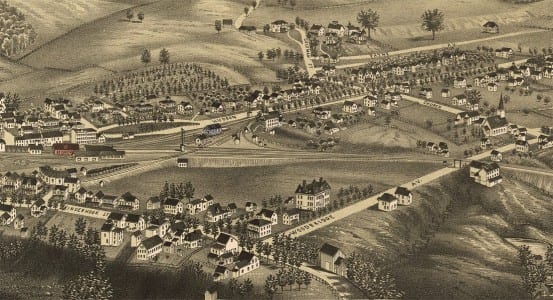
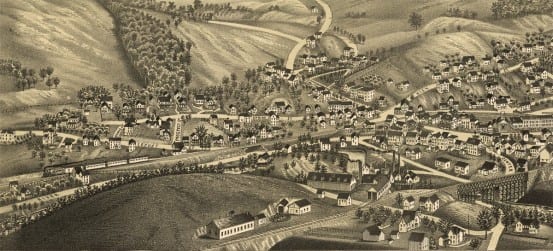

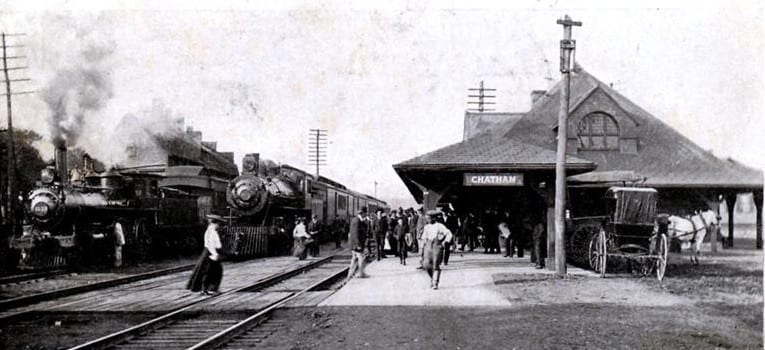
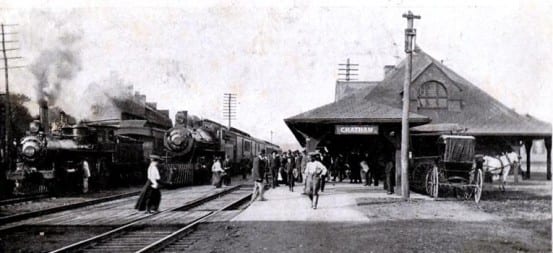
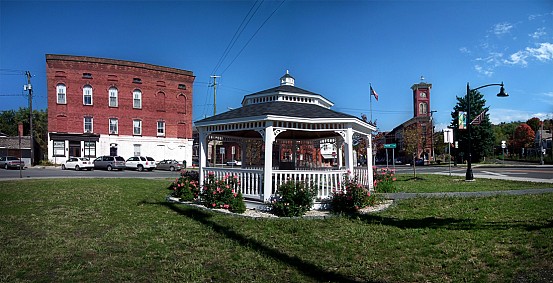
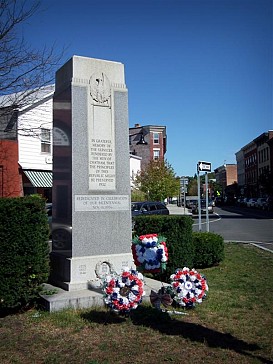
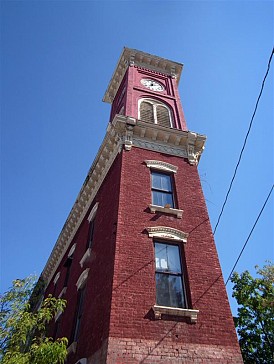
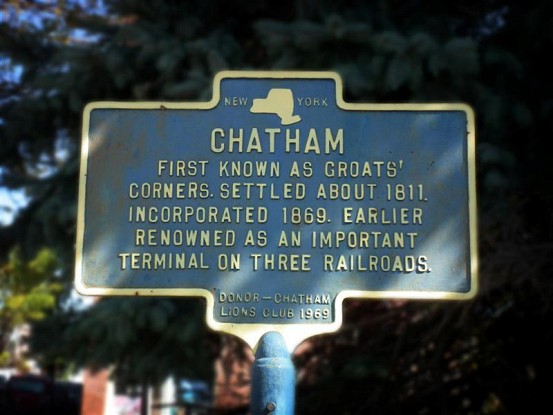
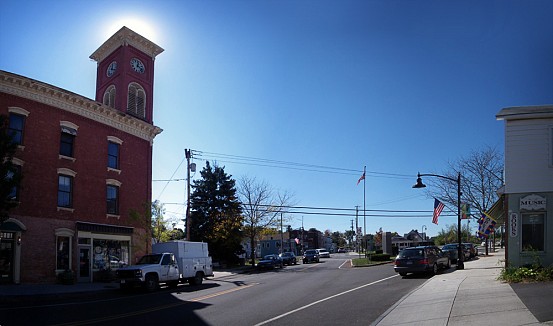
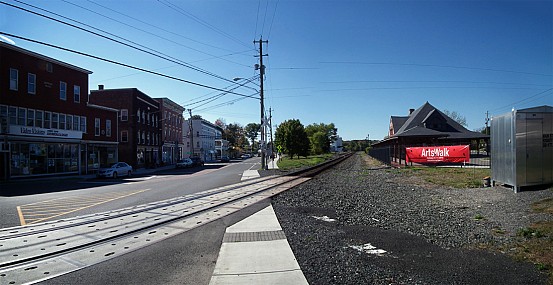
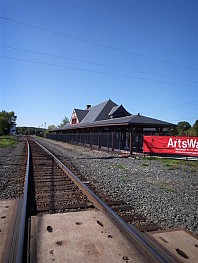
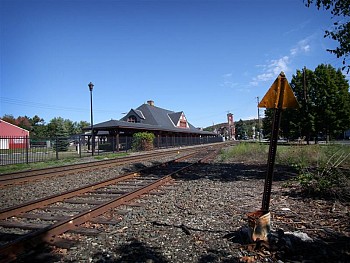
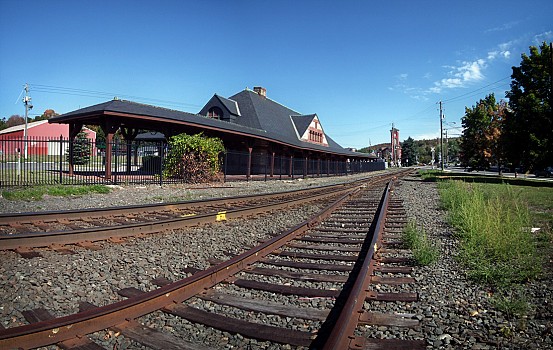
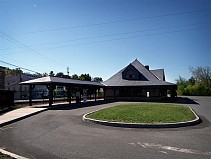
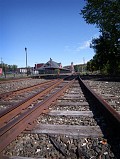
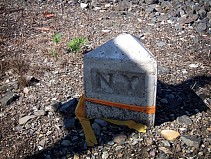
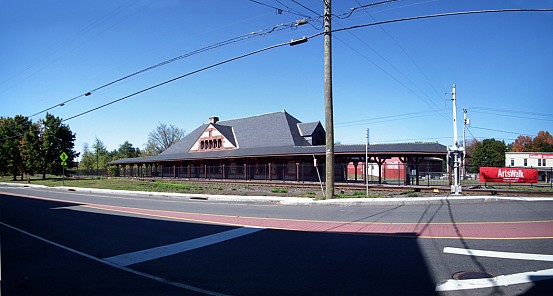
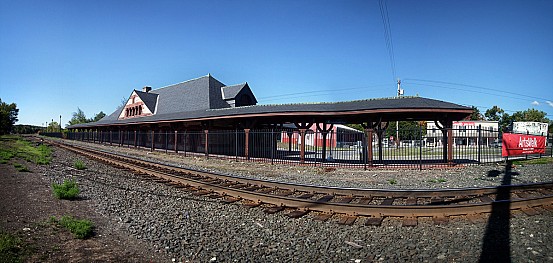
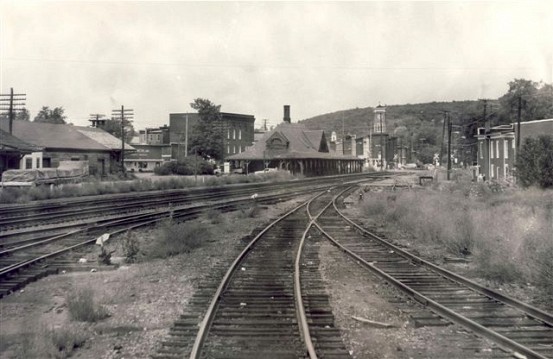
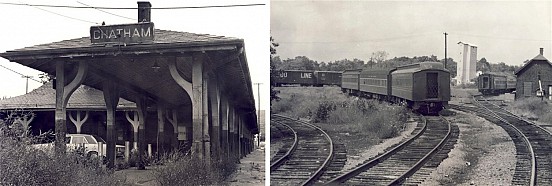

NEVER say never.Anyplace there has ever been a railroad,I think there should be a railroad forever.And there are still Harlem Line stations that give the miles to Chatham.They reopened Wassaic…let that be only the beginning of an inevitable and irrevocable return to the north!
Haha, I suppose you are right. It is always possible, but I think the likelihood is slim to none.
Actually, there is some very serious discussion taking place over the issue of reviving the Berkshire Line in northwestern Connecticut and western Mass to Pittsfield. It might just happen; it all depends on how fervently people living in the communities along the line support this. It should be noted, however, that in the case of the Berkshire Line, the rails were never actually removed as they were on the Harlem line north of Wassaic or Milverton (I’m not sure how far north they still go). Never the less, I can attest to the fact that back in the mid 1980’s, the Berkshire line between North Milford and Canaan, CT was completely abandoned with some 3, 4 and 5-inch diameter trees growing between the rails. Any hope of a revival looked pretty hopeless at that time. But now the line has been returned to service (for freight only) and the future looks bright.
Although restoring track on the Chatham line would be a much bigger and more involved issue, the same principle still holds true that if the communities along the line support this, then it might just happen – someday.
Fred M. Cain,
Topeka, Indian
Reviving the Berkshire Line is a definite possibility… mostly because the tracks still remain. I can totally see that happening. But the tracks north of Wassaic on the Harlem are gone, and what did remain has now been converted into a rail trail. Restoring the Harlem further any north has been discussed ad nauseum. When the line was restored up to Wassaic, it was always possible for the restoration to go further north into Millerton, however the community was opposed.
If the “rail trails†north of Wassaic have successfully preserved 100% of the right-of-way, then that would most definitely be a major plus. Once development has had a chance to encroach upon an old right-of-way, any future restoration becomes at the very least hugely expensive if not down right impossible. Unfortunately, any future restoration north of Wassaic would still be completely impossible without the adamant support of communities like Millerton.
It could well be that if passenger service on the Berkshire Line gets revived and proves successful, towns like Millerton might look at this and begin to feel like, “Hey! What the heck! Why can’t we have this too?†Or, conversely, they might prefer to just drive their cars over to Canaan and catch an express to Grand Central from there. We’ll just have to see, I guess.
Thanks for your help! I support what you’re doing!
Fred M. Cain
When I think of Chatham I always think of the “Five Chathams” (and always forget one!). For the record they are Chatham, Chatham Center, East Chatham, North Chatham, and Old Chatham.
Haha, New York and its classifications of towns/villages/hamlets/etc confuses me. The village of Chatham is inside the town of Chatham, but part of the village also lies in the town of Ghent.
In other news, I apparently start off every comment I make with Haha,
Ridiculous, I was just telling Adam and his mum today how much I love Chatham, not the town itself but the surrounding countryside… we used to visit every year for Thanksgiving. We were driving through this stunning countryside today and I was so nostalgic… Sigh.
I had no idea that you used to go up there! Did you have relatives there, or you just sort of went for the heck of it?
Emily:
I have thoroughly enjoyed your blog since I discovered it after the write-up in The Times. As I told you, I grew up in Sleepy Hollow, NY and live in nearby Elmsford, NY, in walking distance of the old Putnam Line.
My family and I have been avid users of the Hudson Line, from both the Phillips Manor and Tarrytown stations for over 40 years. All stations on the Hudson Line are very unique; some have been recently remodeled, almost all have gorgeous river views and have walking access to riverfront facilities such as parks, restaurants and modern real estate.
At the Phillips Manor station were I literally grew up watching trains and memorizing the train schedule, there is a beach and I was swimming in since I was two.
There is also The Hudson Valley Writers Center
http://writerscenter.org/ that is been operating the in station house since 1992.
In neighboring Tarrytown, there is The Tarrytown Music Hall. http://tickets.tarrytownmusichall.org/
This is a not-for-profit theater venue featuring well known artists in concert. I am volunteer usher in what is an over 100 year old Landmark building.
At the Irvington station, there is now a park, restaurants and office space in what used to be a lumber yard.
This lumberyard is can be seen in the 1959 movie “North By Northwestâ€. About an hour into the film, Cary Grant and Eva Marie Saint are in the dinning car together has “The Twentieth Century Limited†passes the yard and then goes under the Tappan Zee Bridge, shortly after it was completed.
If I can be of assistance to you regarding photos or information about what I mentioned above, or the Hudson Line in general, please don’t hesitate to let me know.
Bob Levine